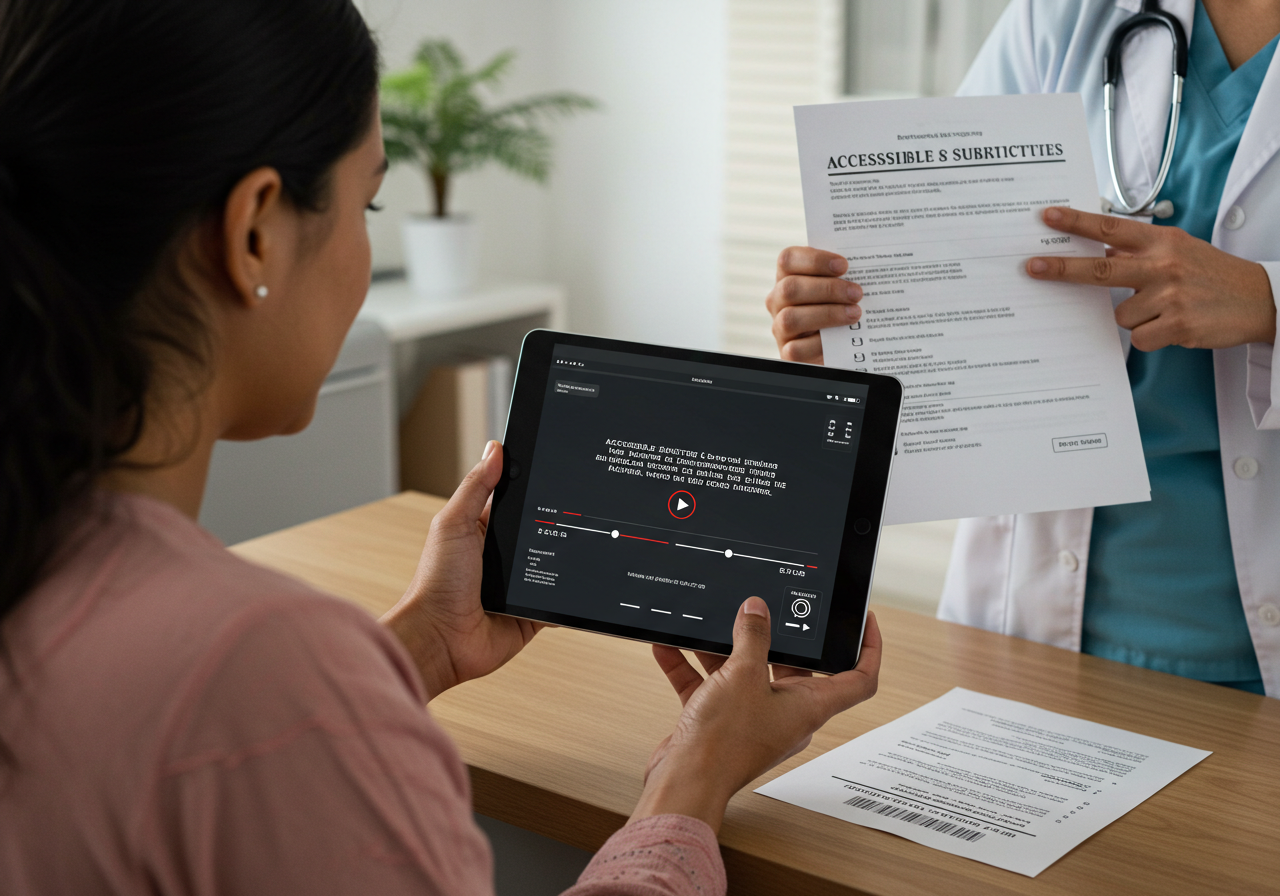Introduction
Health videos only work when patients understand them. For low-literacy audiences, accessible subtitles and plain transcripts are essential. This guide offers practical techniques for simplification, timing and design so your videos truly reach every patient.
Why accessible captions and transcripts matter
- Improve understanding for slow readers.
- Let patients review critical instructions (dosage, steps).
- Support people with hearing loss and noisy environments.
- Boost trust and treatment adherence.
Text simplification techniques
- Use plain language: short sentences, active verbs, everyday words.
- Avoid medical jargon; define terms in parentheses when necessary.
- Focus on action: what to do, when and how much.
- Aim for sentences of 12–15 words maximum where possible.
Timing and subtitle length
- Keep each caption to 1–2 lines and 32–40 characters per line.
- Minimum display time: 1.5–2 seconds; max recommended: 6–7 seconds depending on content.
- Sync captions to natural pauses and idea changes.
- Don’t show more than two consecutive captions without a visual break.
Design and readability
- Use a legible sans-serif font (e.g., Open Sans), min size 18–22 px on mobile.
- High contrast text/background (e.g., white on semi-transparent dark panel).
- Position: bottom center, leaving space for icons or visual cues.
- Avoid moving text or distracting effects.
Transcripts: easy-read format
- Provide a plain-language transcript plus a technical version if needed.
- Add timestamps every 15–30 seconds for quick navigation.
- Use numbered steps and simple tables for doses or schedules.
- Include a short glossary and visual cues (icons).
User testing & metrics
- Test with low-literacy users: read-aloud comprehension, task-based checks.
- Suggested KPIs: % comprehension, avg reading time, video completion rate, post-view questions.
Quick implementation checklist
- Draft in plain language.
- Produce timed captions + plain transcript.
- Check readability (font, size, contrast).
- Validate with 5–10 representative users.
- Iterate and publish.
Conclusion
Accessible subtitles and transcripts are a health equity tool — not a nice-to-have. At SumaLatam we produce plain-language captions, transcripts and usability tests to ensure videos truly help patients. Contact us to run a pilot.





